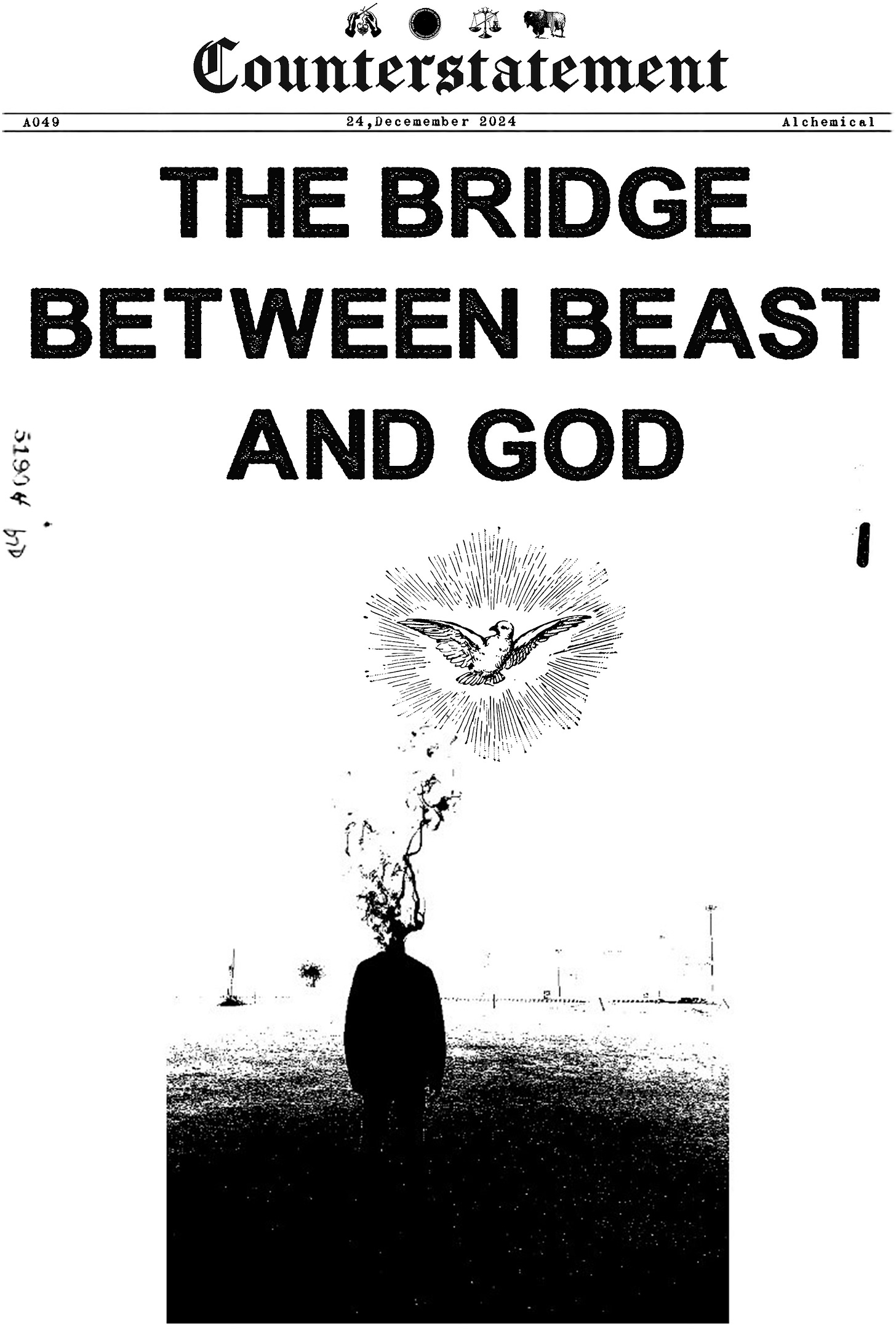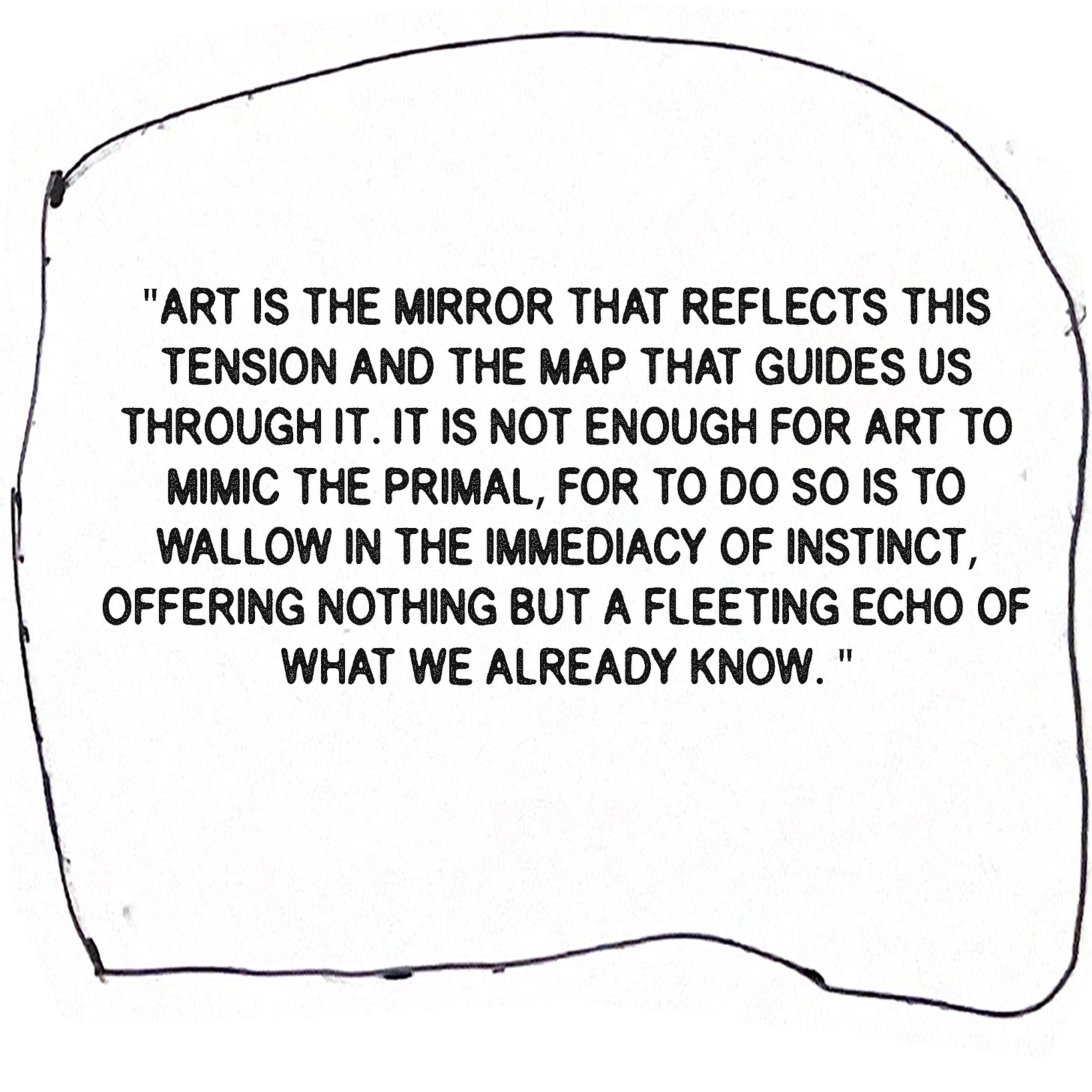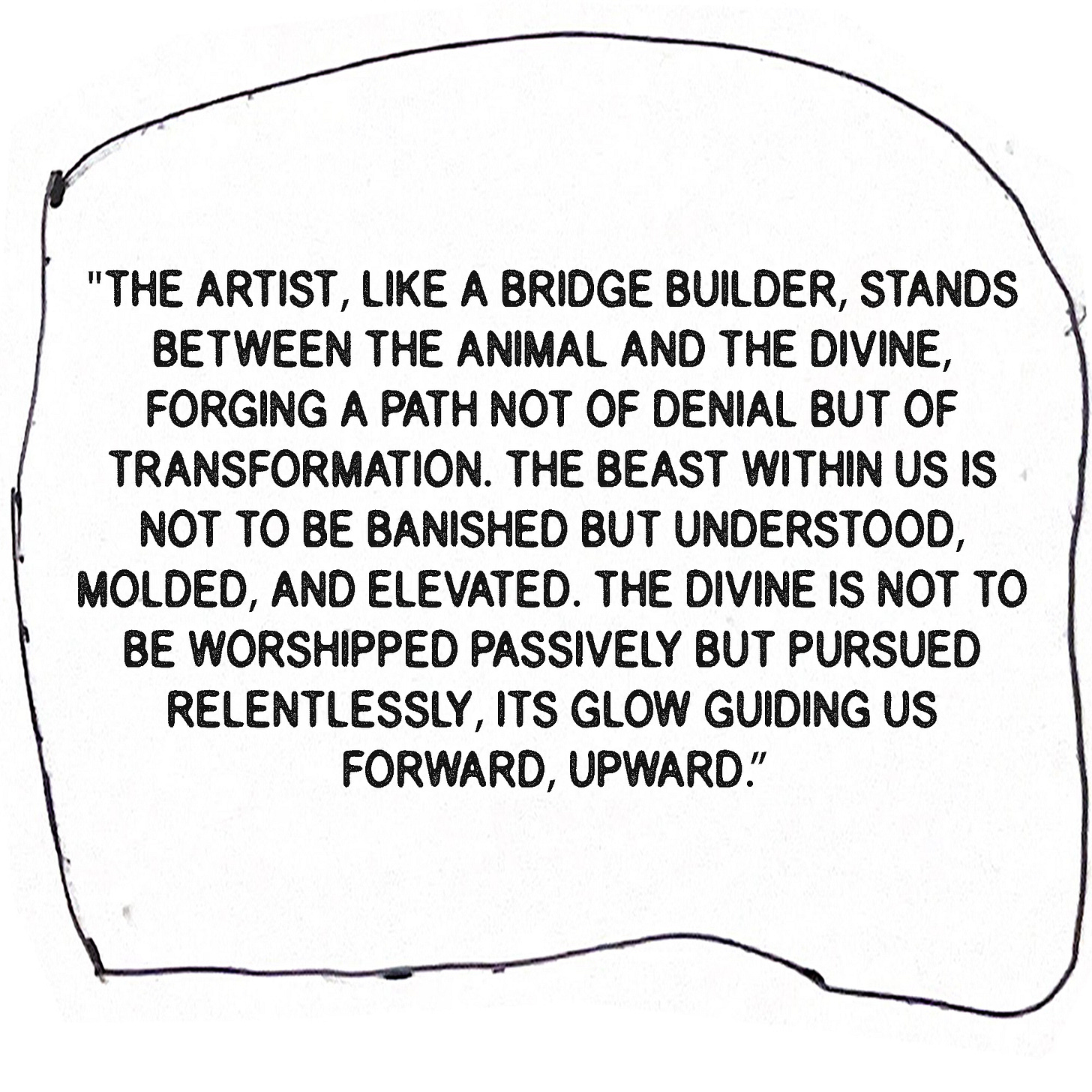The Bridge Between Beast and God
Behold, the artist, that bold creature who dares to wrest beauty from the jaws of chaos! Beauty, I say, is no meek flower plucked from the gardens of complacency, it is born of struggle, of the collision between the raw and the ideal. It is the divine spark ignited in the crucible of human contradiction: the animal bound to earth, yearning for the heavens. True beauty does not merely adorn life; it transforms it, reaching beyond the mundane to sculpt the sublime.
We are creatures of instinct, of hunger and fear, lust and rage, a teeming mass of primal forces that pull us toward survival and the satisfaction of immediate desires. Yet within us burns a restless fire, a will to ascend, to transcend the limits of our flesh and claim the vast dominion of the spirit. This tension, this unyielding battle between what we are and what we dream to become, is the source of all that is beautiful and great. Without the primal, there is no ground to rise from; without the transcendent, no heights to aspire toward.
Do not be deceived! True art does not soothe or flatter, it confronts. It drags us to the depths of our instincts, forcing us to gaze into the void of our own animality. But it does not leave us there. No! It beckons us forward, leading us to transform our basest impulses into radiant ideals. The artist, like the alchemist, transmutes lead into gold, fear into courage, lust into longing, survival into meaning. What is this if not the work of gods?
The primal is our foundation, but it is not our destiny. Beauty arises only when we master the raw forces within, forging them into expressions of truth, unity, and greatness. Michelangelo’s David is not a mere body of flesh; it is a monument to strength and intellect, an anthem to humanity’s power to rise above its own limitations. And so it is with all great art. It is the bridge between the beast and the transcendent self, between instinct and aspiration.
In this struggle lies the meaning of existence itself. The animal seeks comfort; the human seeks purpose. The artist, that divine fool, does not create to escape the human condition but to confront it. Beauty is born of this confrontation, this refusal to yield to mediocrity, this eternal striving for the sublime. To create beauty is to grasp the eternal, to lift the mundane into the realm of the timeless, and to remind us all that we are not merely beasts of the earth but creatures of infinite possibility.
Let the artist rise, then, unafraid of the darkness within! Let them shape the chaos of instinct into the brilliance of vision. For only in this sublime act of creation can we glimpse what it means to be fully human: to stand upon the earth yet stretch toward the heavens, to dwell in the tension between what we are and what we might become. This is beauty. This is greatness. This is the will to art.
Plain Truth:
Art that does not confront the primal nor aspire to the ideal is hollow, a mere echo of existence without purpose or power. To create true beauty, you must embrace the raw, untamed forces of human nature—lust, fear, hunger, and rage—not to glorify them but to transform them. Beauty demands that you wrest meaning from chaos, that you forge a bridge between the base and the divine. The primal is not your enemy, but your foundation; the ideal is not your refuge, but your challenge. The pursuit is the meaning. Without the struggle to rise above, without the refusal to settle for mediocrity, your work is nothing more than noise, fleeting and forgotten. Great art dares to show us not only who we are but who we could become. If you cannot embody this bridge—this striving for transcendence—you are not creating beauty; you are merely reflecting shadows. Choose instead to create light.
















Share this post